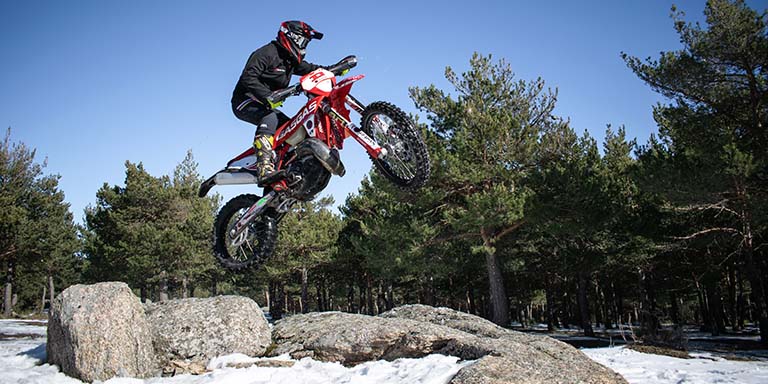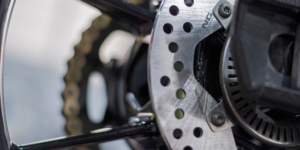NG BRAKES designs and produces brake discs for all types of motorbikes, mopeds, ATVs, UTVs, UXV QUADS and bicycles, among others, regardless of the terrain on which they’ll be used. Therefore, in our catalogue you can find specific discs for scooters, racing and high displacement motorbikes and, of course, for all types of off-road bikes. As you can imagine, each of these discs must have different features that respond to the needs of the users and how they plan to use their bikes.
With that in mind, would you know exactly how off-road brake discs differ from those designed to be used on tarmac? Well, let us give you the lowdown.
They are smaller
The first difference is visual and very easy to identify. Although these discs still attract attention due to their aesthetics, with curious shapes and eye-catching perforations, their size is considerably smaller than those intended for road use. What’s more, they are slightly lighter than the road-going version, so as they adapt, as we said, to the particular needs of this type of motorbike.
Smoother braking
One thing that stands out about the braking system on off-road bikes in general is that it’s required to respond less sharply. The reason for this is simple: when riding on a surface such as tarmac, we have a fairly significant amount of grip. However, when riding on sandy or muddy terrain, a large part of that grip is lost. Therefore, braking needs to be smoother so that you don’t lock the wheel, which could lead to a crash.
Less overheating
As we have mentioned many times before, temperature is one of the most critical aspects of brake discs, especially on tarmac and in high competition, when very high performance is demanded of them. However, since off-road braking must be gentler, the discs do not heat up as much and are therefore not at risk of deformation due to temperature peaks.
Other types of damage are possible
Despite this, due to the dynamics of the discipline itself, brake discs for off-road motorbikes are exposed to all kinds of knocks and can be damaged by small stones or gravel that may be thrown up while riding. For this reason, these discs are generally protected with specific parts made of highly resistant materials.







